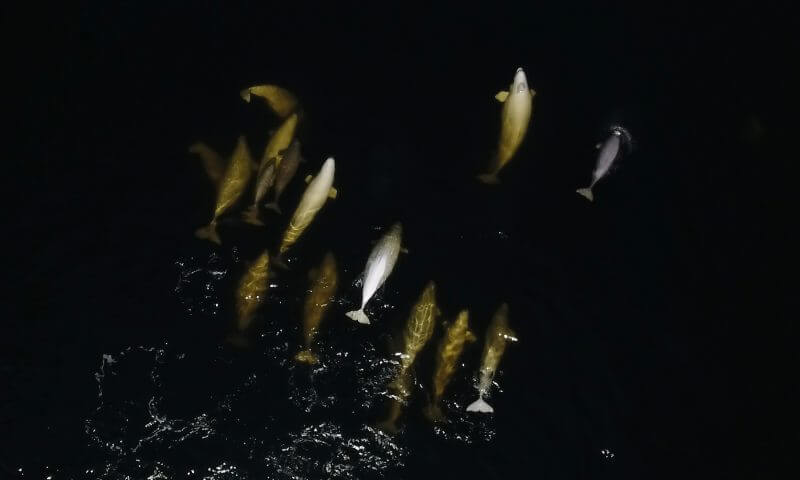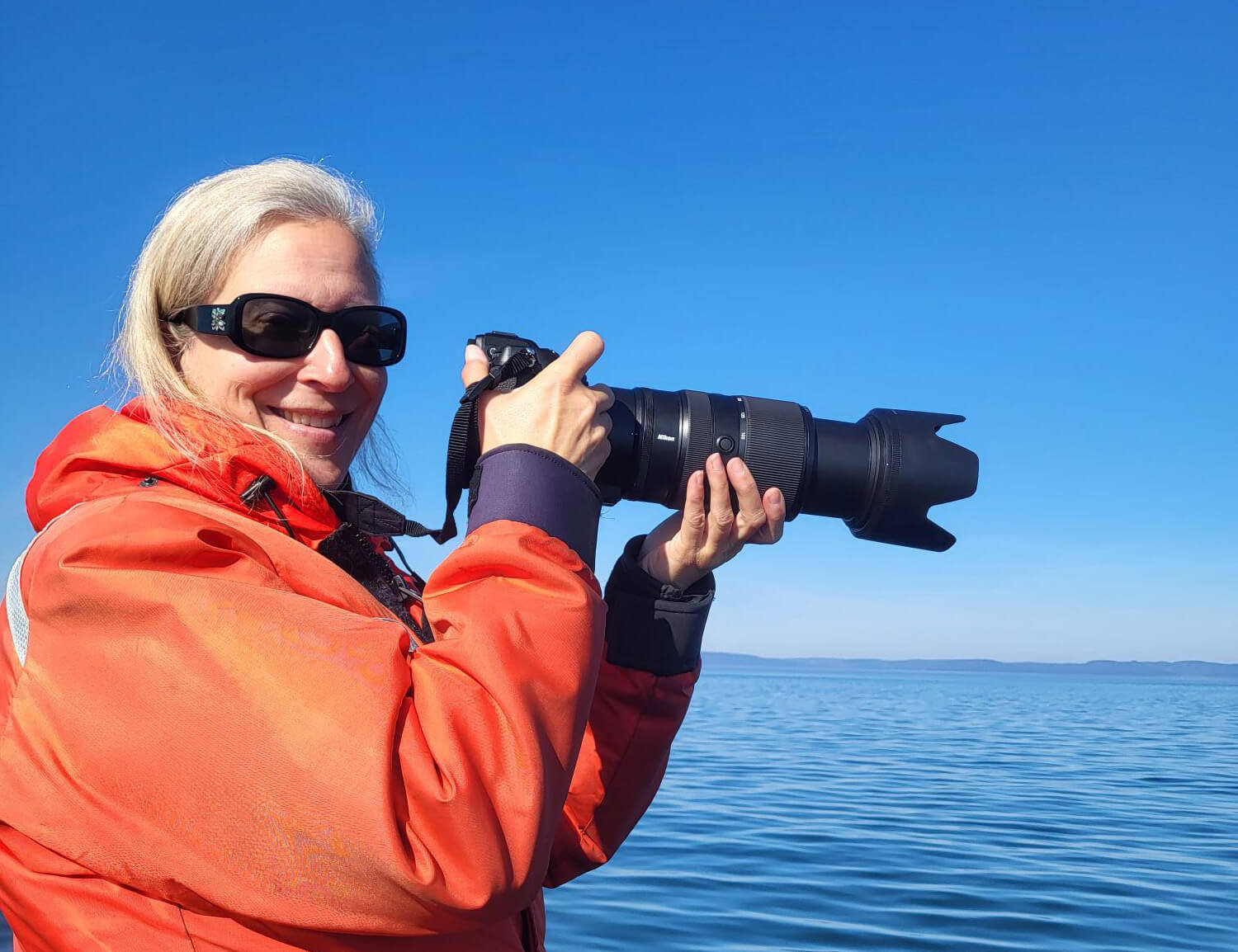By Jaclyn Aubin
Last Saturday, as I hauled myself up onto the platform of the tower, I felt a flutter of excitement in my chest: finally, after a long year of analyzing data, we were back in the field, at our post in Baie Sainte-Marguerite. Equipped with our drone, camera, and hydrophones, Dr. Valeria Vergara’s field assistant Marie-Ana Mikus and I were ready to “spy” on the belugas that regularly visit the bay in summertime. My project, an investigation of allomaternal care (a sort of “babysitting” behaviour) in the belugas of the St. Lawrence, had made great strides over the past year. Indeed, my analysis of drone footage taken from the tower last summer suggests that beluga calves associate with multiple females, in addition to their own mothers. However, I still require a larger sample size to determine the exact nature of these associations.
Although we did not have any luck observing belugas on our first day, our enthusiasm never waned. “Tomorrow!” we repeated to each other, “tomorrow will be the day!”. As we had hoped, Sunday was more productive. Around 4 pm, a group of 20 belugas entered the bay: females with young, including a yearling and a tiny new calf. After taking time to note the size, composition and behaviour of the group, we launched the drone. As I peered down upon them, I felt incredibly lucky: unseen and unheard, I was witnessing the private social lives of these incredible animals. My head buzzed with questions as their secrets unfolded before me. What were they doing? Was their behaviour adaptive? Might our observations give us some insight into the precarious future of this endangered population?
As the sun set over the bay, we reluctantly packed up our gear and rowed back to shore. Although exhausted, we were already eagerly planning our next day with the belugas. With a little luck, we will see them again tomorrow!
To show the translation of the video, click on the CC button at the bottom of the screen.





